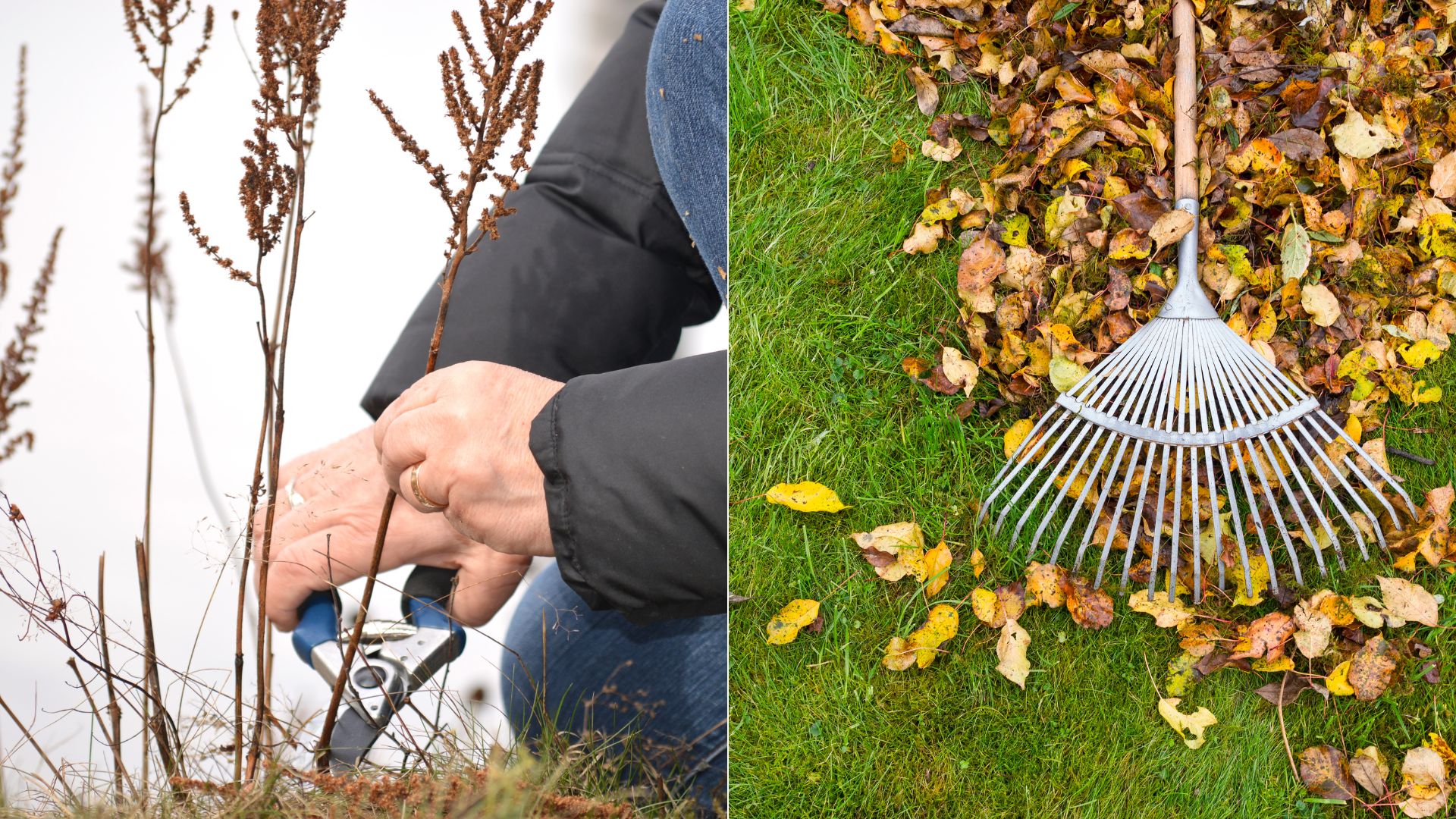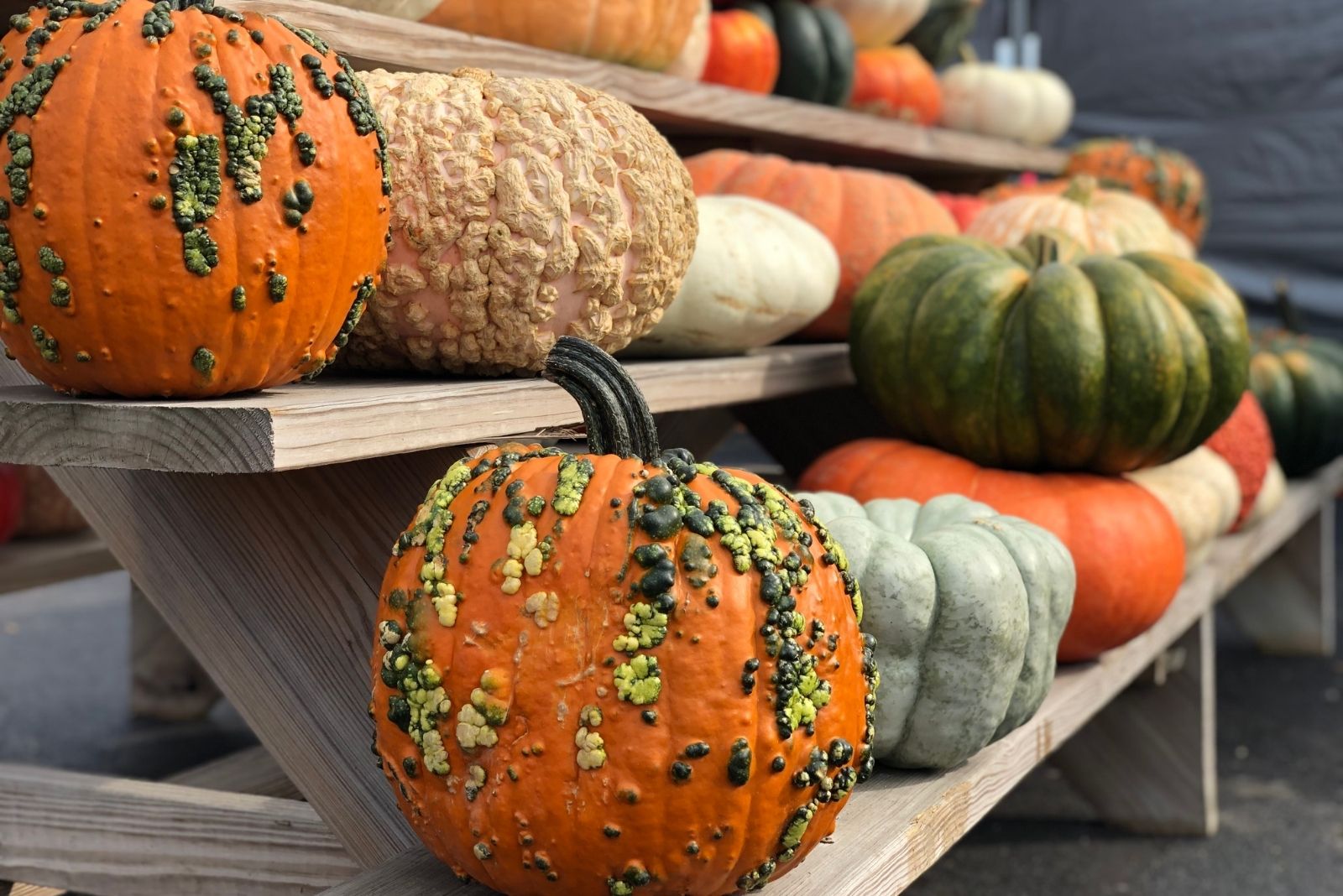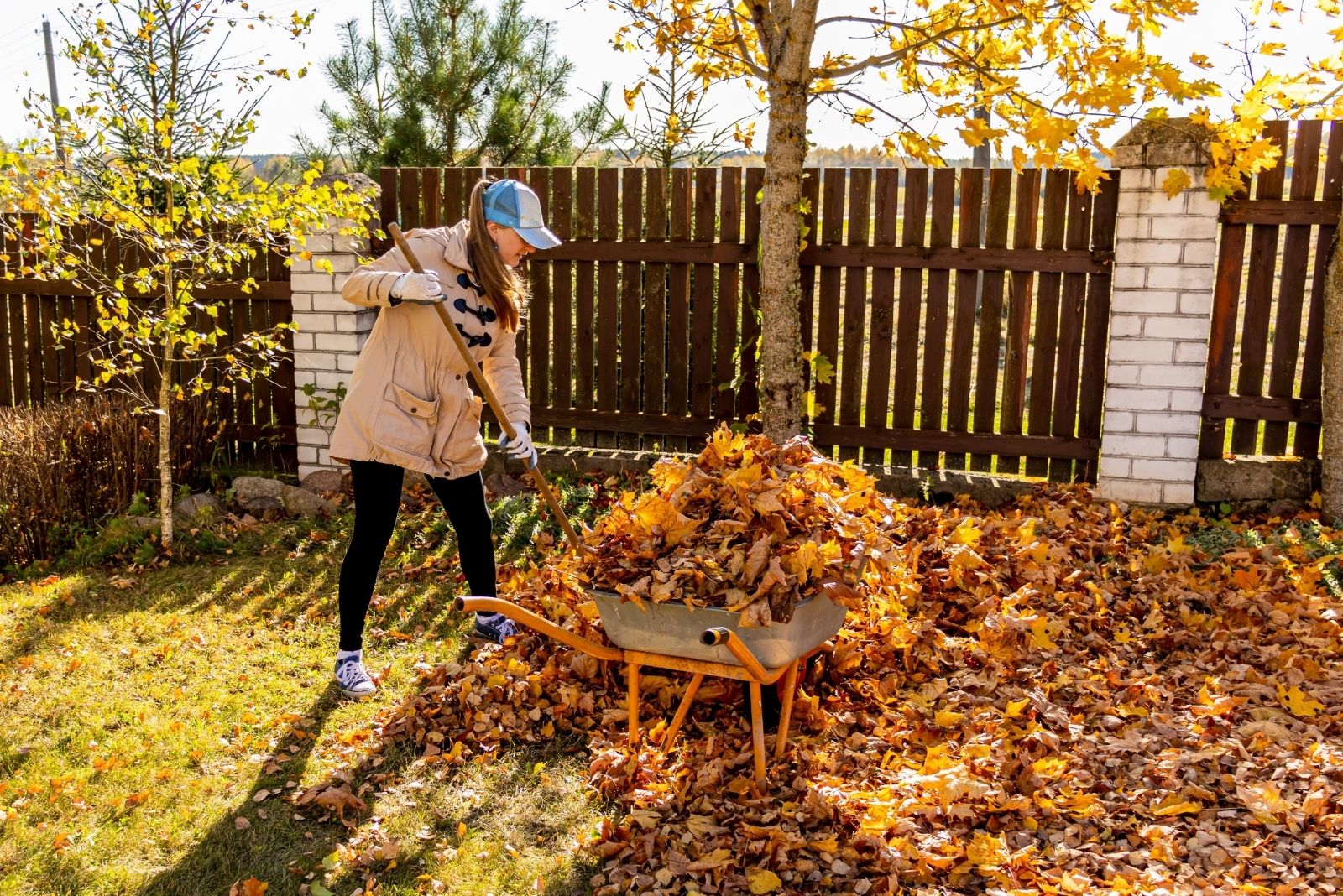Harvesting what is left in the garden, tidying up, and clearing leftover plants and fallen leaves are just some of the things required to set you up for success in the next growing season.
In this article, we are going to cover 10 jobs you need to do in order to have a thriving garden. Let’s get started!
1. Ripen Green Tomatoes
For tomatoes to ripen faster, temperatures should be between 65 to 70 degrees Fahrenheit. As soon as the temperature drops below this level, tomato ripening is going to slow down.
Light actually has very little effect on tomato ripening. In fact, strong light can even inhibit it!
Tomatoes can easily finish ripening indoors. Fruits that are showing a hint of color can be popped into a fruit bowl along with other riper ones.
If your tomatoes aren’t showing much color, then a little trick is to pop them inside a closed environment like a bag or a cardboard box along with one banana – this will trap ethylene gas to increase the chances of the tomatoes ripening.
This is one way to do it, but you can also check 9 ways to make garden tomatoes ripen faster.
2. Lift Root Crops
If you get a really cold winter in your region, where the ground remains frozen solid or covered in snow for months on end, then dig up your carrots while you still can, get rid of the foliage, and put them in a box.
Then, just layer them up, covering each successive layer with more of the old potting mix or sand. It’s important that the roots aren’t touching because one bad root could then pass on the root problem or whatever it is to the next root.
Keep them in a cool and dry place that is also frost-free. This method works well with carrots, beetroots, and parsnips.
3. Clean Glass
Instead of shading the sun, now we are switching to letting in as much sunshine as we possibly can. You should wash off remnants of any shading that you might have applied, and then give everything a really good scrub using soapy water.
Don’t forget cold frames as well!
4. Cut Back Perennials
Cut back perennials to about a few inches off the ground. The stumps that are left will help you identify where the tubers are below ground when you come to lift them during the winter. You should also cut back or remove dead or yellow leaves.
5. Cure Squashes
The leaves of winter squash and pumpkins may be looking pretty rough by now, which means that it’s time to gather up and bring home the harvest haul.
Curing is necessary for fruits to be stored longer. To cure your fruits, just lay them out somewhere warm and well ventilated for them to toughen up and the skins to turn hard. Properly cured squash can be stored for anywhere from 2 to 6 months.
This also might be useful: Harvesting Spaghetti Squash At Its Peak (Timing Is Key)
6. Pick And Store Fruit
Has your growing season been fantastically fruitful?
If so, then properly storing them is crucial if you want to keep them fresh for a long time. To check if a fruit is ready to pick, what you can do is simply cup it in your hands, lift it slightly, and twist. It should come away easily in your hands.
Wrap clean, intact, blemish-free apples and fruits (not ones you’ve dropped) individually in newspaper and pack them into breathable boxes. Also keep them in a cool location that is frost-free.
7. Cover Winter Salads
Winter salads and hardy Asian greens like tatsoi will slow down considerably in growth as the weather gets colder. You can extend the season by simply deploying row covers such as fleece or cloches, but you can also use a miniature polythene tunnel.
To create a polythene tunnel, use bamboo cane and put one into each corner of the bed. Then, you can use alkathene water pipes over them to create the arches for the tunnel. Add another cane in the middle to improve stability and cover it with a clear plastic sheet.
8. Order Garlic
Garlic is a popular root veggie that is often sold out. This is why I would recommend you to order your garlic right now before it sells out. You can look in your local shop or you can always order it online!
When choosing your garlic, do bear in mind that there are two types of garlic: hardneck and softneck. Hardnecks produce fewer but larger cloves and they are super hardy. These also produce edible flower stalks.
On the other hand, softnecks produce more cloves so these tend to be a bit smaller. However, softneck garlic can be stored for an extended period of time.
Here’s how to grow unlimited green onions like a pro!
9. Rake Up Leaves
The autumn leaf fall is around the corner and the wise gardener will be making plans to make the most of this annual windfall.
You can leave most leaves on grass or garden beds where they will soon rot, but you should rake up leaves off paths and terraces and other areas that might get a bit slippery.
All you need is a springtime rake and a wheelbarrow to gather them up and move them to the compost heap.
10. Make More Compost
With so much coming off the garden, it’s worth asking the question: “could I add something to my composting pile?”.
Having two compost heaps or bays is really useful because once one is full up, you can leave it to mature and go fill the second one. Making compost bays is really simple – use gauge wire to lash together three pallets and anchor them in place.
You might also find interesting: 95 Things You Didn’t Know You Can Compost






